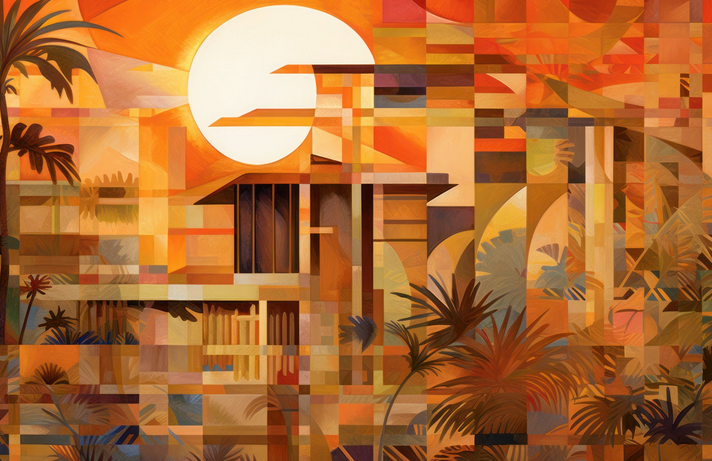The use of geometric shapes in architecture has been a prominent and enduring feature throughout history, representing a fundamental and expressive element of architectural design. From ancient civilizations to contemporary structures, geometric shapes are used to imbue buildings with structural integrity, visual interest, and symbolic meaning. The exploration and application of geometric forms in architecture play a significant role in shaping the built environment. Here are several aspects to consider when exploring the use of geometric shapes in architecture:
Structural Integrity and Stability: Geometric shapes such as triangles, squares, circles, and polygons are essential to achieving structural stability and balance in architectural design. Triangular forms, for example, are known for their inherent strength, commonly used in the construction of trusses and support systems. Similarly, the use of circular shapes can distribute loads evenly, offering stability and structural integrity in domes, arches, and other forms.
Visual Interest and Aesthetic Appeal: Geometric shapes are used to create visually compelling and aesthetically pleasing architectural compositions. The use of geometric patterns, such as tessellations and intricate mosaics, adds decorative and ornamental elements to facades, interiors, and exteriors, contributing to the overall beauty and appeal of a structure.
Symbolism and Cultural Significance: Geometric shapes often carry symbolic and cultural meanings. For instance, the use of the circle in architecture can symbolize unity, infinity, or continuity. The triangle, with its inherent stability, may represent strength or harmony. In some cultures, specific geometric patterns hold religious or spiritual significance, influencing the design of sacred spaces and ceremonial structures.
Spatial Organization and Functionality: Geometric shapes are used to organize and define architectural space. Rectilinear forms are often employed to create modular, functional layouts, while irregular polygons can add complexity and uniqueness to spatial configurations. The inherent properties of geometric shapes influence the flow, division, and function of interior and exterior spaces.
Light and Shadow Play: Geometric shapes interact with light and shadow, influencing the play of natural and artificial lighting within architectural spaces. The use of angular forms and intersecting planes creates dynamic light patterns, adding vibrancy and visual interest to interiors and exteriors.
Contemporary Expression and Innovation: In contemporary architecture, the use of geometric shapes continues to evolve, with architects and designers experimenting with new forms, asymmetrical compositions, and cutting-edge geometries. The exploration of complex geometries, parametric designs, and organic forms allows for innovative and forward-thinking architectural expressions.
In conclusion, the use of geometric shapes in architecture transcends mere functionality and structure, encompassing conceptual, visual, and cultural dimensions. The deliberate application of geometric forms in architectural design serves to imbue spaces with meaning, create captivating aesthetics, and express the creative aspirations of architects and designers. As an essential element of architectural language, geometric shapes contribute to the harmony, symbolism, and visual richness of the built environment.
